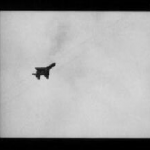An Indian Army unit that trounced the Europeans in battle
The military history of the Indian Subcontinent is replete with narratives of the Europeans gaining upper hand in battles they waged against the native forces of India. One unique instance however stands out when an untrained native army with primitive weaponry scored a decisive victory over a well-trained European force bearing the latest arms of the day. This was the Battle of Colachel fought on the 10th of August 1741 between the army of Travancore, better known as the ‘Nair Brigade’, and an invading force of the Dutch East India Company. King Marthanda Varma, the powerful and ambitious ruler of a small kingdom called Venad, who was in the process of assimilating other such kingdoms in the neighbourhood to form the larger state of Travancore came into conflict with the Dutch when his expansionism came in the way of Dutch trading interests with other kingdoms.
The Dutch, acting coercive, found a tough rival in Marthanda Varma who not only dared them to try aggression but threatened that he was contemplating an invasion of Europe. An initial attempt by the Dutch to take on the defiant king by joining forces with a rival kingdom of his ended in utter humiliation for them as the Travancore army thrashed the combined force they fielded and annexed the kingdom. The Dutch were forced to retreat to Cochin following which Marthanda Varma captured all their forts in the area. The Dutch retaliated by landing a force of Dutch Marines from Ceylon under the command of a Flemish officer, Captain M. Eustace Benedict de Lannoy, at the small coastal town of Colachal near the Southern tip of Indian Peninsula. The force marched northward to capture Mathanda Varma’s capital, Padmanabhapuram, and laid siege to the Kalkulam Fort there. The Nair Brigade, marching southward, arrived in time to break the siege and force the invaders to withdraw and take a defensive position at Colachal. On 10th August they attacked the Dutch at Colachel. In the heated battle that ensued the Dutch were completely overpowered, the day ending with a large number of Dutch being killed or made prisoner. Besides the rank and file the prisoners included some 24 officers. Marthanda Varma, impressed by the fighting prowess of De Lannoy and his second-in-command, Donadi, took them into his service and had them train his army on modern lines like the European armies of the times.
De Lannoy who served with great dedication moulded the Travancore Army into a highly competent fighting force and was to command it himself later in the King’s future campaigns against his enemies including the Dutch. Eventually, the Dutch had to sign a treaty with Marthanda Varma following the defeat of all their allies up to Cochin by him, which virtually marked the end of their colonial dreams in India. The King honoured De Lannoy with the title of ‘Valia Kapitaan’ (Commander-in-Chief) and allotted the Udayagiri Fort near the capital for his residence, which came to be called the ‘Dillanai Kotta’ for De Lannoy Fort. By the time De Lannoy died in 1777 the Travancore Army had 50,000 men in its ranks. De Lannoy went on to create a defence line on the northern border of Travancore territories using the many forts the Dutch had surrendered. Called Nedumkotta, this northern line would witness the routing of the French-trained, marauding forces of Tipu Sultan by the Travancoreans in 1789 in a historic last stand. Tipu who was lamed for life when he fell off his horse during the battle had to abandon his conquest of Travancore for good as the English East India Company soon joined forces with Travancore.
The once-powerful Travancore Army was virtually disbanded following it joining the unsuccessful revolt against the British by Velu Thampi Dalawa in 1809. Reduced to merely a 700-man unit called the 1st Nair Battalion, it was renamed the 1st Battalion, HH The Rani’s Troops in 1818. Although the Nair Brigade was re-raised the following year by adding another battalion they were restricted to police duties till 1836 when East India Company’s troops withdrew. However it was only in 1901that they were fully taken off the police role and reverted to a pure military one, now commanded by a British officer. With Travancore joining the Indian State Forces Scheme in 1934, the Nair Brigade and the Maharaja’s Bodyguard were merged to become the Travancore State Force. Two of its battalions, the 1st and the 2nd, were deployed in Burma, the Middle East and Egypt during World War II, mostly guarding installations. On disbandment of the State Forces in 1951, these two, with additional men drawn from the remaining units, were merged with the Madras Regiment of the new Indian Army as its 9th and 16th Battalions respectively.
The 9th Battalion, traces it origin to the year 1704 when it was raised at Padmanabhapuram, the capital of the erstwhile kingdom of Venad as the Maharaja’s personal bodyguard. Though redesigned through the ages, the unit continues to maintain its distinct identity with no history of disbandment or re-raising. Having completed more than three centuries of unbroken history of service 9 Madras (9th Battalion, The Madras Regiment in today’s army parlance) can be considered the oldest surviving unit of the Indian Army. The Battalion has remained steadfastly true to its gallant traditions serving with distinction in every war independent India fought. The unit wrote its most glorious chapter during the 1965 Indo-Pak War when, after having been in the vanguard of Indian advance on Barki with 65 Infantry Brigade, during night 22 – 23 September it single-handedly stormed the bund on the eastern bank of the Ichhogil Canal held in strength by the enemy. In a do-or-die operation that barely lasted two-and-a-half hours, they virtually annihilated the enemy, killing some 50 of them and throwing almost double that number into the canal, while wounding and capturing many others, much as their ancestors did the Dutch at Colachel long ago. They paid for the feat dearly too with some 50 of their own killed. Deservedly 9 Madras earned the epithet the ‘Terrors’.
The other descendant battalion of the Travancore Army, 16 Madras, gave an equally plucky account of itself by its stellar performance in the Battle of Basantar, the grittiest battle of 1971 War. The proud legacy of the Nair Brigade lives on.
The Madras Regiment maintains a memorial for the Battle of Colachel at its site and commemorates the battle every year.






We bow oyr heads to the armed forces of India who laid down their lives for The Country.
International institutions should acknowledge the crucial contributions of our Indian Soldiers who were not acknowledged or compensated.